LET’S TALK ABOUT FOOD ACCESS IN WARD 9
GREAT FOOD ACCESS MAKES GREAT HUMAN HABITAT
Food and shelter are the most basic of our needs and the relationship between the two defines our habitat. For human civilization, the relationship between food and cities is seminal - without the surpluses delivered by the agricultural revolution, increasing percentages of the human population would never have been able to diversify their pursuits and skill sets beyond the daily search for calories. While the basic assumption is that agriculture preceded and enabled cities, some thinkers, notably Jane Jacobs, have suggested the inverse; that it was the act of gathering together in increasingly complex communities that super-charged human ingenuity to the point where we could solve challenges such as agriculture. For well over six millennia, across the globe, human civilization existed as a regional phenomenon - villages, towns, and cities were interconnected by networks of commerce, and culture, and food.
Today we find that fundamental relationship in a challenged position - the end of the Second World War precipitated massive shifts to life as we knew it: North America led the globe into an experiment, unprecedented in scope and scale, of building our cities as segregated and disaggregated habitats for automobiles as opposed to mixed-use habitats for humans; globalization obscured the role of the region as the vessel of civilization while supercharging the movement of food across vast distances as both a commodity as well as an expression of cultural collisions; and, the more recently converging catastrophes of climate change, disease vectors, rising inequality, and financial and political instability have brought the critical role that food plays in successful human habitats into sharper focus.
Since the 1990s a variety of social movements have increasingly converged around food as a key determinant of human success moving forward. Social justice movements have explored the role of food in anti-colonial discourse, cultural diversity, and the distinctions between agribusiness and agriculture. Public health and anti-poverty movements have keyed in on nutrition as a key determinant of health, introducing terminology such as “food deserts,” and have sought to restore agency to peoples disempowered by their lack of knowledge as to how to grow and prepare food. And the environmental movements have focused on reintegrating food production into a new regionalism based on farmland retention, localized food-sheds such as the 100 mile diet, and urban agriculture and agrarianism.
Ward 9’s mixed-use neighbourhoods, working landscapes, and diverse peoples have been instrumental in building the City of Calgary that we know and love today, and they are at the forefront of building the city that we are becoming. One of the core strengths that bridges the city we were with the city we’re becoming is East Calgary’s ongoing role as the city’s center of food production, agribusiness, and agri-technology. Another core strength is the incredible diversity of international foods serving Canada’s third most diverse city’s most diverse neighbourhoods. But there are also food challenges associated with poverty and automobile dependence that are being met by an incredible constellation of social-serving organizations. This map is our snapshot in time as to the state of food in Ward 9 as well as the beginning of a conversation as to how we may best reintegrate food back into a more resilient understanding of our habitat.
Map Artist: Kelsey Fraser
Graphic Design: Kaitlyn Pilloud




